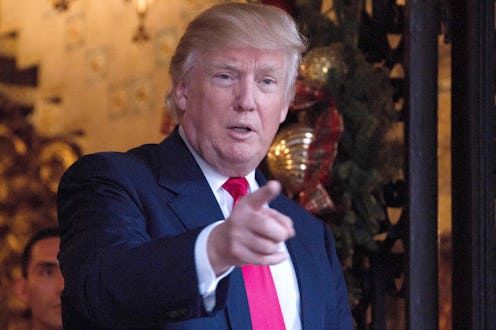Life
Why The Inauguration Is Always At Noon

At 12 pm sharp on January 20, the presidential term of Barack Obama will end and Donald Trump’s will begin. Why is the inauguration always at noon? And why January 20? It turns out that, although the United States government is founded upon a peaceful transition of power, it took a long time for lawmakers to figure out exactly when and how that should happen — in fact, it wasn’t until the 1930s that they actually passed an amendment to establish the date and time that U.S. presidents now assume power. When he takes the oath at noon in a few weeks, Trump will be following the tradition of every U.S. president since Franklin D. Roosevelt.
The very first presidential inauguration — that of George Washington — took place in New York City of April 30, 1789, more than three months after our now-standard January 20. For subsequent presidents, the swearing-in date was moved to March 4. For many decades, the gap between the election in early November and the inauguration in March was thus considerably longer than our current one. As Atlas Obscura points out, there were historically important reasons for this four-month wait, not least of which was simply that, in the old days, counting a whole nation’s worth of votes took a long time, as did spreading information about the election once it was decided. A gap was also deemed necessary (as it still is) because a transfer of power doesn’t occur in a day. A president elect has a lot of work to do, from selecting a new cabinet to organizing the move into the White House, and that work requires time.
However, the long gap between the election and the March 4 inauguration day proved problematic. That four-month waiting period made it difficult for presidents — both the incoming and exiting — to deal with crises. A particularly stark example of this occurred in 1860 after the election of Abraham Lincoln. During the months-long wait for Lincoln to take office, Southern states seceded from the Union and established the Confederate States of America, taking control of federal arms and defensive positions. Garrett Epps of The Atlantic remarks of the episode, “By March 1861, when Lincoln took office, the Civil War was nearly lost, though officially it had not even begun.”
A similar problem occurred again after Franklin D. Roosevelt won the presidential election in 1932. The nation was in the depths of the Great Depression, and the long lame duck period meant there was a significant delay in FDR’s implementation of crucial economic reforms.
That year, Congress proposed an amendment to the Constitution to make the inauguration earlier. Amendment 20 was ratified in 1933 and established that the presidential inauguration would always take place on January 20 at noon. The amendment shortened the lame duck period from nearly four months to about two and a half months.
So why noon? It makes sense that the amendment would have to specify, not only a day, but also an exact time for the transition of presidential power to take place. After all, there can’t be any fuzziness about who is Commander in Chief at any given moment. So, the exiting president is officially in power until 11:59:59 am on January 20, and the new president takes over at 12 pm on the dot. Organizers of the ceremony thus try to have the incoming president take the oath of office as close to noon as possible.